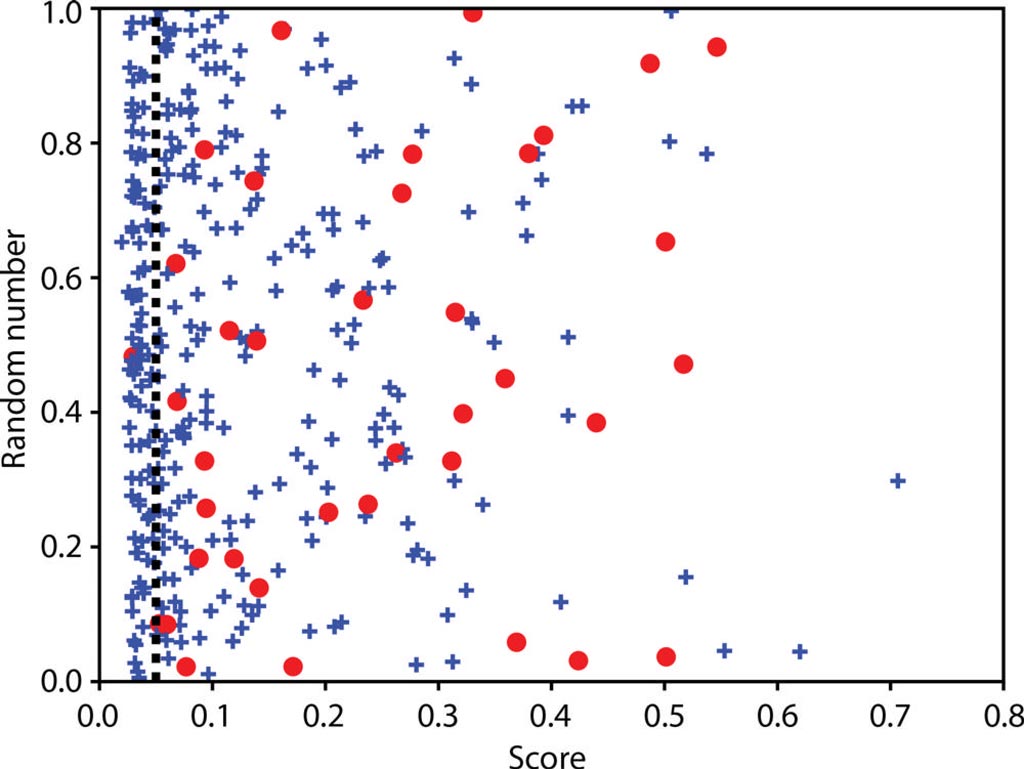Researchers Train Model to Identify Breast Lesions
By MedImaging International staff writers
Posted on 24 Oct 2017
Researchers have trained a machine-learning tool to identify high-risk, biopsy-diagnosed breast cancer lesions that are unlikely to become cancerous, and do not require immediate surgery.Posted on 24 Oct 2017
The model was 97% accurate in its predictions and could help reduce unnecessary breast cancer surgeries by 33%. High-risk lesions have a higher risk of developing into cancer, but many such lesions could be safely monitored using imaging, without requiring surgery.

Image: The scatterplot shows the machine learning model score compared to a random number in the independent test set (Photo courtesy of RSNA).
The study was published online in the October 2017 issue of the journal Radiology by researchers from Massachusetts Institute of Technology (MIT; Boston, MA, USA), and Massachusetts General Hospital (MGH; Boston, MA, USA). The machine-learning tool enabled the researchers to find those high-risk lesions that have a low risk of being upgraded to cancer.
The model took account of patient age, lesion histology, and other standard risk factors, but also included keywords from biopsy pathology reports. The researchers trained the model using patients with biopsy-proven high-risk lesions. After training the model on two-thirds of the high-risk lesions, the researchers found that they were able to identify 97% of the lesions that were upgraded to cancer. The researchers also found that by using the model they could help avoid almost one-third of the surgeries of benign tumors.
The author of the study, radiologist Manisha Bahl, MD, MPH, from MGH and Harvard Medical School, said, "There are different types of high-risk lesions. Most institutions recommend surgical excision for high-risk lesions such as atypical ductal hyperplasia, for which the risk of upgrade to cancer is about 20%. For other types of high-risk lesions, the risk of upgrade varies quite a bit in the literature, and patient management, including the decision about whether to remove or survey the lesion, varies across practices. Our goal is to apply the tool in clinical settings to help make more informed decisions as to which patients will be surveilled and which will go on to surgery."
Related Links:
Massachusetts Institute of Technology
Massachusetts General Hospital














